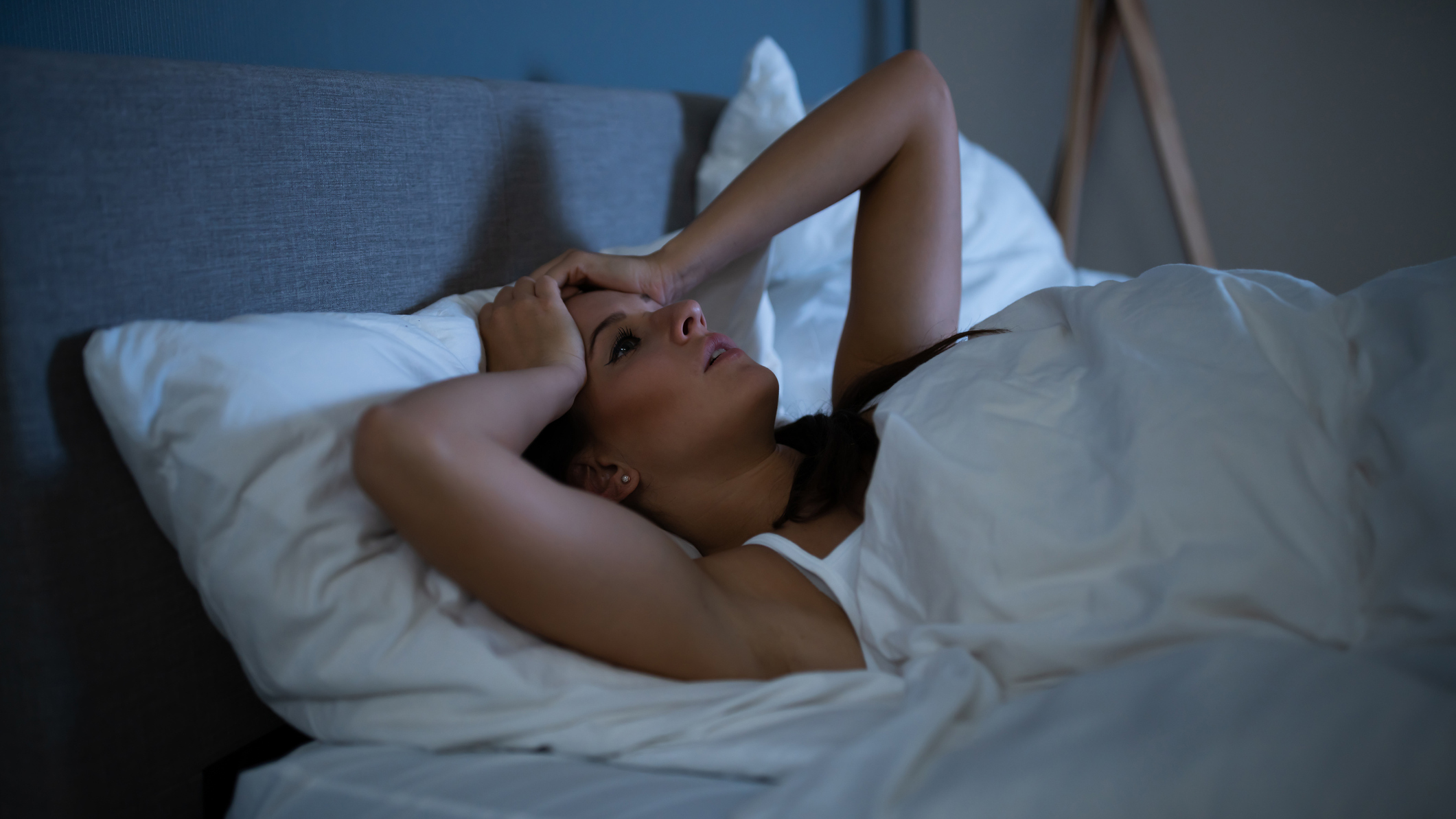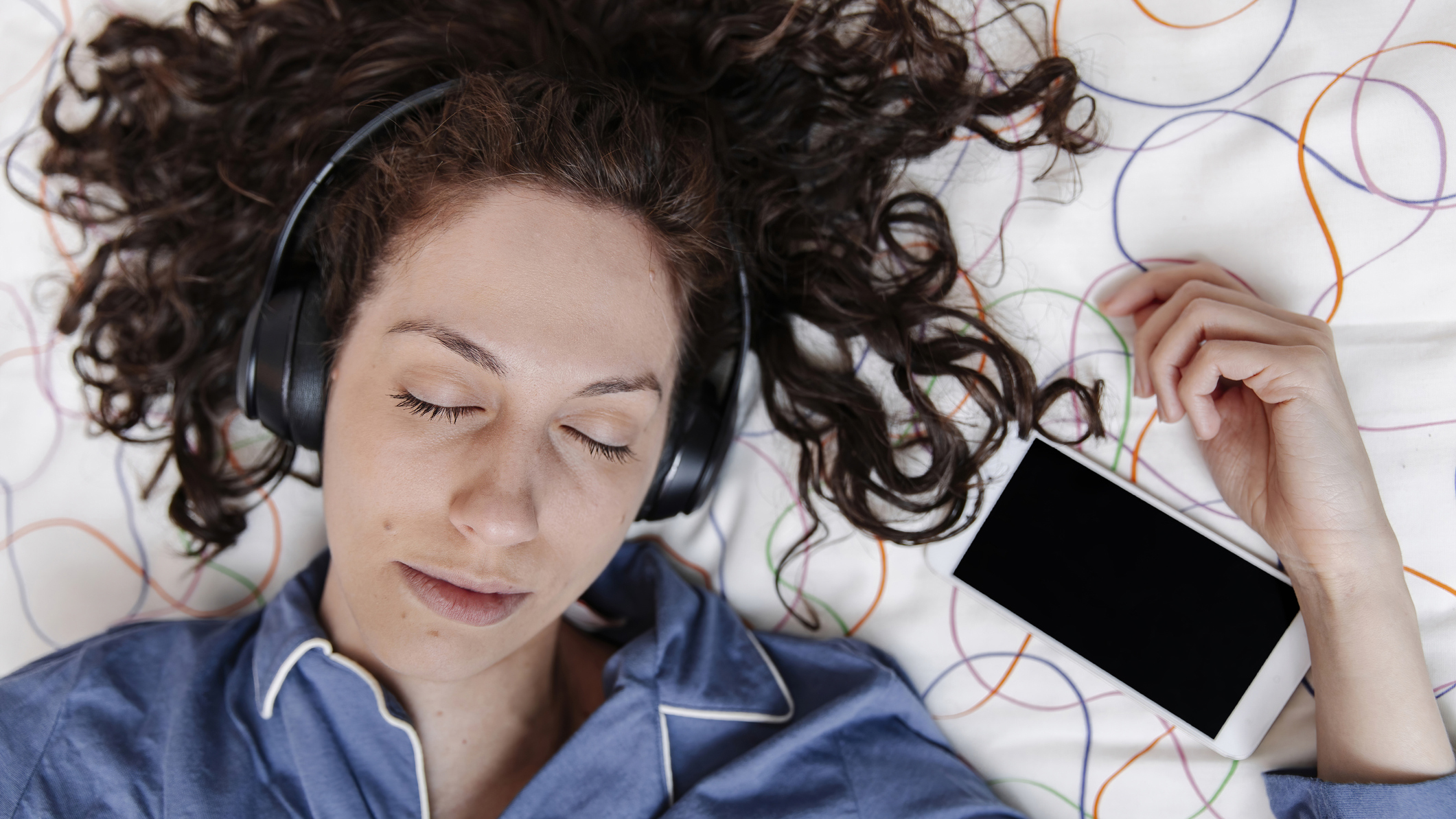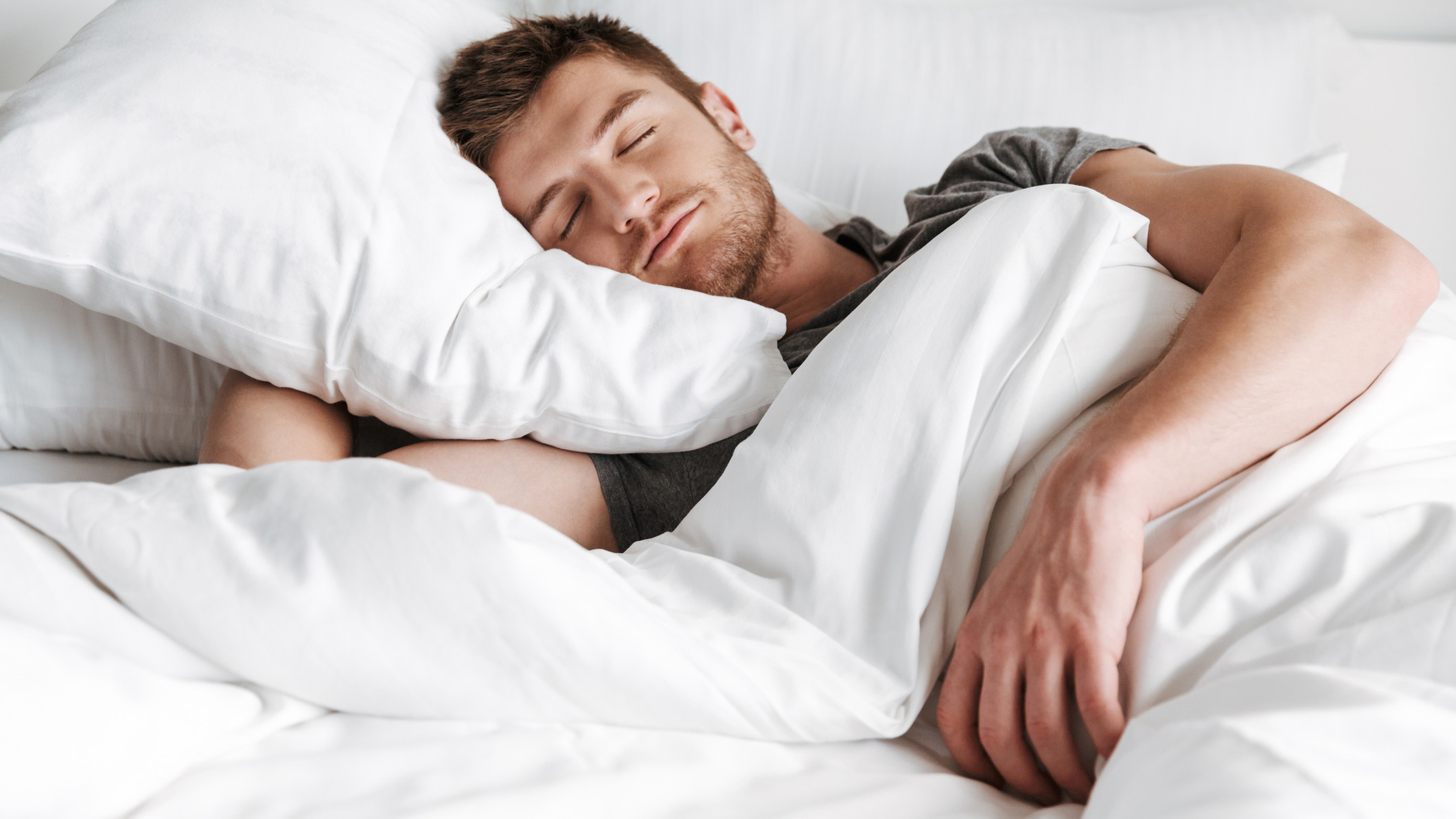What to do when you can’t sleep — 5 tips you need to try

Not knowing what to do when you can't sleep is terribly frustrating – but you're not alone. A recent poll shows that 54% of American adults struggle to sleep comfortably, with women and younger adults (under 30) reporting the most issues.
Losing quality sleep means you'll be more prone to the effects of sleep deprivation, which include weakened immunity, poor cognitive function, and decreased mood. A lack of sleep can also lead to high blood pressure and an imbalance in blood sugar.
If you’ve been on the sharp end of too many sleepless nights, we’ve rounded up five of the best techniques and tips you can try starting tonight. You'll also want to make sure to create the perfect environment for sleep, which includes finding the best mattress for your body type and sleep position. (Fortunately, you can save money during year-round mattress sales.)
Of course, if your sleeplessness continues and you can’t pinpoint an obvious reason for it, you may have insomnia or another sleep disorder. In that case, speak to a sleep doctor to see what help is available. Otherwise, here's what you can try when you can't sleep at night...
What to do when you can’t sleep at night
1. Get out of bed and leave the bedroom
The cruel thing about sleeplessness is that you feel physically exhausted. So while getting out of bed might be the last thing you feel like doing when you can’t sleep, it’s a proven training technique for managing insomnia.
If you're struggling to drop off, follow the 15 minute sleep rule; get up, head into a different room and do something mundane for around 20 minutes. For example, read a dull book (nothing that will excite your brain) or fold laundry.
Do anything that a) removes the pressure for you to fall asleep, and b) helps you feel drowsy again. While sleep schedules are useful, you should only go to bed when you feel tired - just aim to get up at the same time each day.
Get instant access to breaking news, the hottest reviews, great deals and helpful tips.
Meanwhile, exercise is one of the best things you can do for your overall health. We're not suggesting you start a workout in the middle of the night, but rather find the best time to exercise for sleep during waking hours. Whether you work out in the morning or evening, you'll likely find it much easier to fall asleep.
2. Do a body scan when you can’t sleep
It’s amazing how tense and sore your body can get when you’re tossing and turning all night. A body scan is another sleep technique used in insomnia training, and it enables you to pay attention to the physical sensation of your body and reclaim control over how it feels.
It also switches your brain from panicking about not being able to sleep and focuses you on relaxing instead. (Stress and worry are common reasons for sleepless nights.) Body scans can last from one to 30 minutes, and the more you practise them, the more effective they are. Here’s one of the highest-rated body scans for sleep on YouTube…
This can also help to relax you if restless leg syndrome is keeping you awake. We recently asked a doctor how to stop restless leg syndrome from ruining your sleep and there is a range of tips and treatments you can use, starting with magnesium.
3. Practise mindful breathing for insomnia
The longer you lie in bed being unable to sleep, the more you’ll build a negative association between lying there and not sleeping. Physically moving your body to a different spot on the bed to breathe mindfully can help you relax faster. And because you’re still on or around the bed, you’ll start rebuilding positive associations between your bed and sleep.
To practise mindful breathing, focus on how your breath feels and flows on each exhale and inhale; the exhale is when your body relaxes and tension leaves your muscles.
According to Sleep Station, ‘Focusing on the breath is helpful because it serves as an anchor — something you can turn your attention to at any time if you start to feel stressed or carried away by negative emotions or worries. This technique can be used to help you drift off to sleep.’
Try it tonight with these simple steps:
- Sit in a comfortable position with your eyes closed
- Notice how different parts of your body feel on the mattress
- Next, focus on how your chest and stomach rise when you inhale
- Now, notice how they fall when you exhale
- If your mind wanders, gently pull it back to your breathe
- Do this for a few minutes before going back to sleep
You can add another level to this by practising some nighttime yoga – combining mindful breathing with gentle movement. We tried a bedtime yoga routine with 14 million views on YouTube and experienced a decrease in the time it took for us to unwind before falling asleep.
And if you want to go a little more high-tech with this solution, the Dodow is a cheap insomnia gadget with a pulsating blue light you sync your breathing to, helping you fall asleep in as little as eight minutes.
4. Can't sleep? Write down your thoughts
Psychologists recommend scheduling ‘worry time’ ahead of bedtime and in a different room, but sometimes sleeplessness at night is caused by a racing mind that catches us by surprise.
If you keep going over your to-do list, get out of bed and jot it down quickly on a pad - keep the lights dim so you don’t wake yourself up even more. By writing them down to deal with tomorrow, you’re processing them so they won’t keep you awake. The positive effects of bedtime writing when you can’t sleep at night are backed by research.

5. Listen to a sleep podcast or white noise
A dark, silent room can feel oppressive when you can’t sleep. Try some white noise (or pink or brown noise) to relax you. Many of the best sleep apps use different types of ambient noise, as well as nature sounds like rainfall or other types of green noise for sleep.
Another option is to listen to a sleep podcast, such as the top-rated Sleep With Me (free on Spotify). The host, Dan Ackerman, has an unobtrusive voice and often talks about stories from his childhood, so there’s nothing here to get your brain whirring.
How to sleep better tomorrow night
1. Create a relaxing bedtime routine
Go to bed when you feel tired, otherwise you’ll have a harder time falling asleep and that could make you anxious that you won’t sleep. The main thing is to get up at the same time every morning, as with time this should help your body get into its own sleep rhythm and learn how to sleep for longer.
There are plenty of things you can include in a relaxing bedtime routine, including taking a warm bath or shower to lower your core temperature (helps your body sleep better), drinking a herbal sleep tea, doing some gentle stretches, knitting, or a sleep meditation.
2. Double down on your sleep hygiene
Positive sleep habits set you up for better sleep long-term. We talk a lot about good sleep hygiene at Tom’s Guide. Here are some ways you can improve that...
First, what's the state of your bedroom like? If your space is full of clutter and your sheets are looking kind of grim, it's time to do some cleaning. You can follow these five cleaning tips for a good night's sleep.
Next, if you want to sleep better at night naturally, keep the blue light out of bed. Evening screen time has been show to have a negative impact on sleep, so ditch your tech an hour or two before winding down – although if you must get some late-night browsing in, put your device in nighttime mode.
Finally, do what you can to enhance the production of melatonin, the sleep hormone. One way to do this is to switch to dim lighting in the evenings to signal to your body that it's time to wind down. You can also introduce melatonin supplements into your diet (with a doctor's recommendation), though this is intended to be a short-term solution.
By the way, mind what you consume in the hours before bedtime. Avoid sugar, caffeine, and alcohol, as these will impede your sleep. An if you often end up waking up in the night to use the bathroom, consider stopping drinking around 3 hours before bed.

3. Make your bed the comfiest place for sleeping
An uncomfy bed is a recipe for broken sleep. Unsure what type of mattress would suit you? We have multiple guides to help, from the best cheap mattresses for tight budgets to the best mattresses for side sleepers that'll provide the right amount. of pressure relief along your hip and shoulder.
There are beds dedicated to specific health issues too, such as cooling mattresses to combat overheating. There are even mattresses and beds that can help stop or reduce snoring, and orthopedic mattresses that can alleviate severe back pain.
It isn’t just about your mattress though. What you rest your head on also affects your sleep comfort. When you have the best pillow for your body and sleep position, your spine will be aligned and you won’t be bent out of shape.
And don't forget about what you dress your mattress in. Pick a breathable duvet or comforter to help you feel secure but not hot, and consider using a weighted blanket if you’re dealing with sleep anxiety.

Claire is a Certified Sleep Science Coach and the Managing Editor of Sleep at Tom's Guide. She curates our mattress guides and oversees our rigorous mattress testing procedures. Claire has over 16 years' product review experience and is connected to a wealth of globally renowned sleep experts including mattress designers and buyers, neuroscientists, and doctors of sleep medicine. As the Managing Editor of our Sleep and Mattress Team, Claire is responsible for all mattress and sleep content published on Tom’s Guide and is our expert on Saatva, DreamCloud, and Nectar mattresses. Claire is also certified to advise people on how to choose a mattress that suits their needs and budget, as well as helping them to create a nighttime routine and bedroom environment that helps them sleep better.
- Alison BarrettaExpert mattress tester

